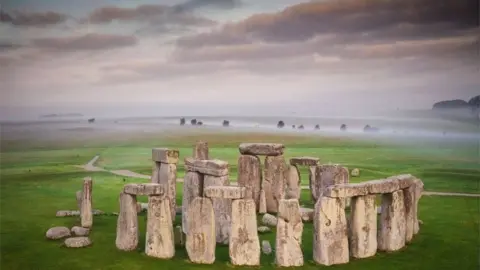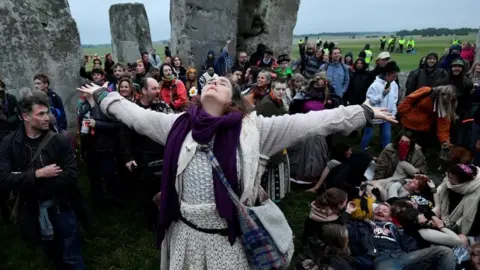Stonehenge 'built on land inhabited by deer and wild boar'
 Reuters
ReutersRed deer, elk and wild boar would have roamed the Stonehenge area 4,000 years before the stones were constructed, according to new research.
Scientists examined a nearby Mesolithic site and found the area was not a forest as previously thought.
Instead they believe it would have been populated by grazing animals and hunter-gatherers.
The work has helped build a picture of the habitat at the Wiltshire site from up to the Neolithic period (4,000 BC).
 Reuters
ReutersSamuel Hudson, from the University of Southampton, explained: "There has been intensive study of the Bronze Age and Neolithic history of the Stonehenge landscape, but less is known about earlier periods.
"Past theories suggest the area was thickly wooded and cleared in later periods for farming and monument building.
"However, our research points to pre-Neolithic, hunting-gatherer inhabitants, living in open woodland which supported aurochs and other grazing herbivores."
The research team analysed pollen, fungal spores and traces of DNA preserved in ancient sediment, combined with optically stimulated luminescence and radiocarbon dating to produce an environmental history of the UNESCO World Heritage site.
"The study indicates that later Mesolithic populations at Blick Mead took advantage of more open conditions to repeatedly exploit groups of large ungulates (hoofed mammals), until a transition to farmers and monument-builders took place," explained a university spokesman.
"In a sense, the land was pre-adapted for the later large-scale monument building, as it did not require clearance of woodland, due to the presence of these pre-existing open habitats."
